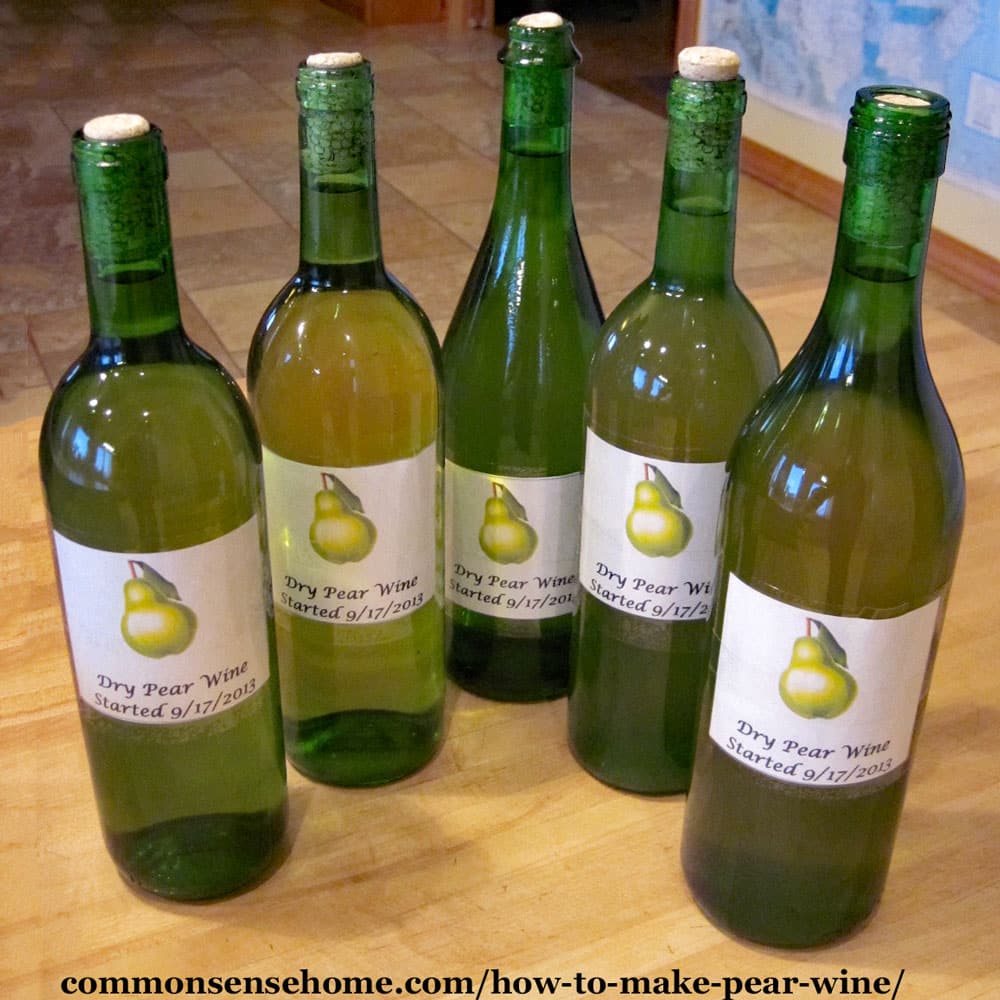
For ease of removal, place in a separate straining bag. Options: To add body, add one or two very ripe bananas, cut crosswise into 1⁄2-inch slices, before pitching yeast. Taste after six months, but it will improve considerably at one year. If sweetened, wait 30 days to ensure no renewed fermentation and carefully rack into bottles. Stir well and sweeten to taste or to balance. Add 0.2 g potassium metabisulfite, 1⁄2 tsp dissolved potassium sorbate, and 1⁄8 tsp grape tannin. Carefully rack, check clarity, and correct with pectic enzyme and, if required, two-part fining. If the wine is not clear, rack and set aside until wine clears. Rack off of sediment and set aside another 60 days without stirring. Post-Fermentation: Move wine to a dark, cool place for 60 days, stirring every 15 days. When SG drops to 1.020, or lower if the fermentation is still vigorous, transfer to secondary and affix airlock. Hang the bags over the bowl and squeeze firmly after 30 minutes. Remove bags to a large bowl and squeeze firmly to expel remaining juice. Add to primary and stir well.įermentation: Gently squeeze bags at least twice daily for five days. Add yeast to water, stir, and cover mixture for 30 minutes. Re-cover primary and set aside 12 hours.Īdd yeast: To 1 cup warm water (not to exceed 102 degrees F) add a pinch of sugar and yeast nutrient and stir to dissolve. Add pectic enzyme, stirring until completely dissolved. Add 0.2 g potassium metabisulfite, stir well, cover primary, and set aside for 12 hours. Add water to make 1 gallon and test juice for pH. When lukewarm, dissolve yeast nutrient in 1 cup of juice and stir into the primary. Pour sugar water over bags and stir well. Put 1 liter of water on to boil and add sugar, stirring well to dissolve. In the primary, mash fruit completely to release as much juice as possible. Place chopped pears in nylon straining bags and tie closed. Prepare must: Wash, de-seed, and chop pears rather finely, discarding their seeds.

pears per gallon of wineĪDDITIONAL EQUIPMENT: 1-2 nylon straining bags It is quite natural and such wines don’t suffer as a result. It is probably due to the enzymatic oxidation of certain unidentified phenolic compounds. The color begins to shift from clear to a slight pink to purple. With a little more focus on balance, that good pear wine can be an excellent one.Īn unusual thing happens to some pear wines as they age. In either case, you learn what to do and what not to do.

Making a poor one is just as instructive as making a good one. It is as easy to make a good pear wine as it is to make a poor one.

An adult tree will produce more pears than a person can possibly consume.

Most people who make pear wine have one or more pear trees or know someone who does.


 0 kommentar(er)
0 kommentar(er)
